When you decide to outsource SEO services, you're making a strategic move to scale your agency. Bringing a white label SEO company on board should feel like adding a powerful new engine to your operation, not like trying to merge two cars traveling in opposite directions. Yet, many agencies discover that this partnership, intended to streamline workflows, can inadvertently create a tangled mess of duplicated efforts.
Suddenly, two teams are targeting the same keywords, building links to the same pages, and even rewriting each other’s metadata. This isn’t just inefficient; it's counterproductive. Duplication wastes billable hours, confuses search engines, and can actively harm your client's rankings. It creates a cycle of confusion where neither team has a clear picture of the overall strategy, leading to inconsistent results and frustrated clients.
A 2025 analysis by Seize Marketing Agency highlighted that prolonged search ranking volatility, potentially due to inter-team overlap, has been a concern among SEO experts. This overlap isn't just about wasted resources; it’s a direct threat to campaign performance. This guide will walk you through the structural causes of duplication, provide actionable blueprints for creating a seamless workflow, and explain how to turn your collaboration with a white label partner into a true competitive advantage.
The Real Cost of Duplication in SEO Operations
For a busy agency, duplication might seem like a minor inefficiency, but its ripple effects are far more damaging than you might think. It's not just about doing the same work twice; it's about actively undermining your own success. When your in-house team and your white label SEO partner are working in silos, you lose billable hours, compromise data integrity, and send conflicting signals to search engines that dilute your campaign's effectiveness.
The hidden risks of SEO duplication are significant. They include:
- Keyword Cannibalization: When both teams optimize different pages for the same high-intent keywords, they force those pages to compete against each other in the SERPs. This splits authority and click-through rates, often causing both pages to rank lower than a single, unified page would.
- Conflicting Link Strategies: Imagine one team is executing a high-authority guest posting campaign while the other is focused on directory submissions. Without coordination, you risk creating an unnatural backlink profile or acquiring redundant links from the same domains, which can trigger spam filters.
- Contradictory Schema Markup: Inconsistent schema implementation on the same page can confuse search engine crawlers. For example, if one team uses Product schema and the other uses Service schema for the same offering, it creates ambiguity that can prevent rich snippets from appearing.
Consider this mini-example: a healthcare client had their in-house team and a white label SEO partner simultaneously optimizing product pages. The in-house team focused on long-tail, symptom-based keywords, while the external partner targeted broader, high-volume product terms. The result was two sets of pages competing for similar user intent, and both experienced a drop in their rankings. For agencies, the takeaway is clear: duplication isn’t just inefficiency—it's a form of brand erosion that scales with your client base.
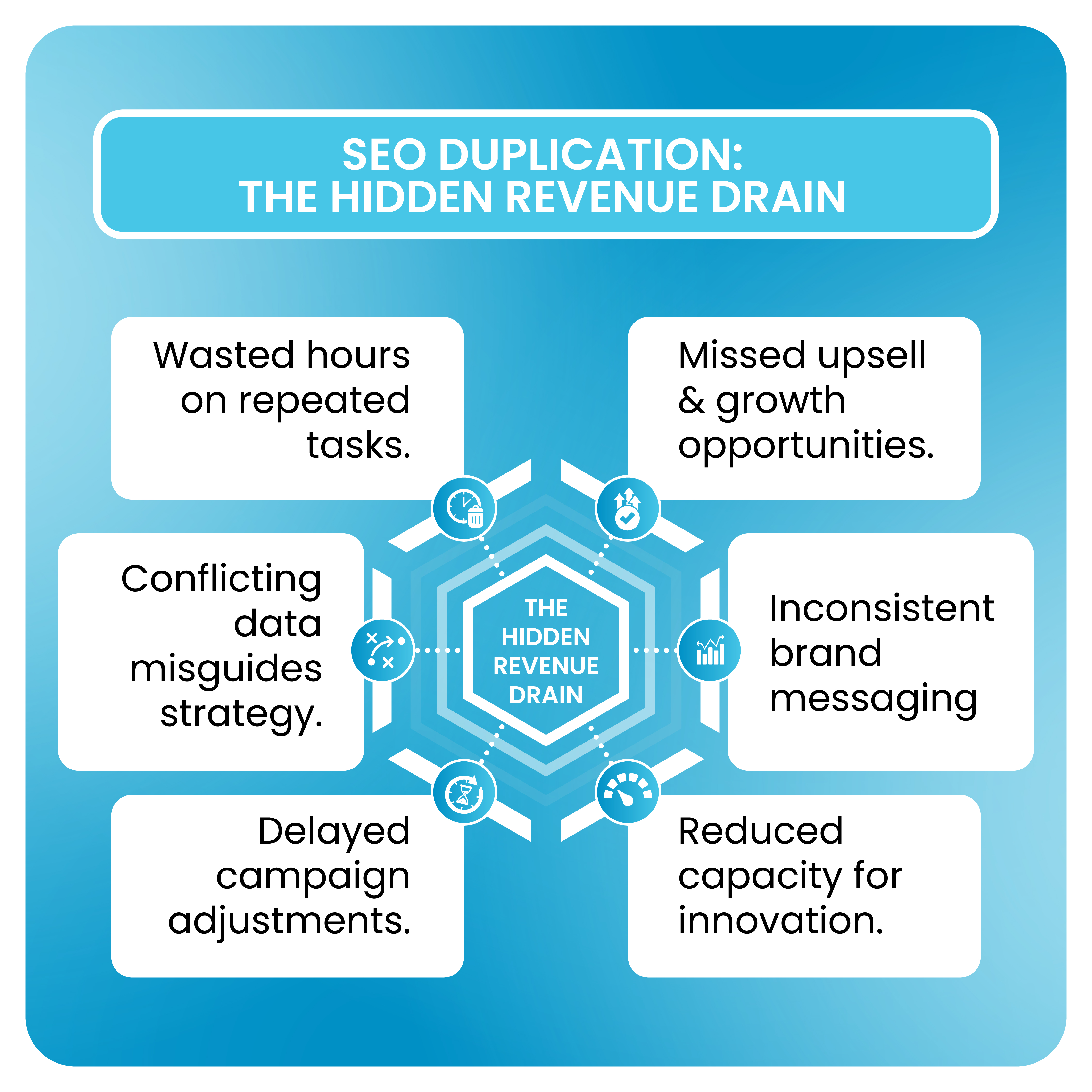
Why Duplication Happens: Deep Structural Causes?
Duplicated work is rarely the result of incompetence. More often, it stems from deep-seated structural issues in how agencies manage communication, data, and roles. Understanding these root causes is the first step toward fixing them.
- Fragmented Communication Chains: Most overlap begins with siloed task management. When a white label SEO company operates on assumptions because client communication isn't centralized, they're flying blind. Weekly email updates aren't enough to keep teams aligned on the dozens of micro-decisions made daily in an SEO campaign.
- Data Desynchronization: Your in-house team might use SEMrush for keyword research, while your partner uses Ahrefs. Different tools, reporting intervals, and tracking methodologies produce conflicting data. This leads each team to chase different metrics and prioritize different actions, creating a fractured strategy.
- Ambiguous Role Boundaries: Agencies often underestimate how granular their "responsibility mapping" needs to be. Simply assigning "on-page SEO" to one team and "off-page SEO" to another is too broad. Dynamic campaigns require clarity on who owns tactical tasks like "keyword intent validation," "internal linking," and "metadata implementation."
- Cultural Misalignment: A white label SEO partner typically operates based on global best practices and scalable processes. In contrast, an in-house team is often more attuned to the client’s specific brand voice, internal politics, and local market nuances. Without a bridge between these two perspectives, their efforts can diverge.
As SEO strategist Eli Schwartz put it, “SEO discussions that consider the knowledge and input from various cross-functional teams lead to the best output.” This lack of awareness is a systemic failure, not an individual one.
Designing a Duplication-Proof Workflow
To prevent overlap, you need to build a workflow grounded in shared visibility and clear accountability. It’s not about more meetings; it's about smarter systems.
1. The Visibility Rule: Both teams must work from the same live roadmap, not from separate documents that are updated weekly. Invest in a synchronized project management software like DashClicks' project management software or a centralized dashboard where progress is mirrored instantly. When one team completes a task, the other should see it in real time.
2. The SEO Role Grid: Create a detailed task responsibility matrix. This grid should break down broad categories into specific tactical actions and assign a clear owner to each.
- Keyword Research: White Label SEO Partner (Initial Research), In-House Team (Brand & Intent Validation).
- On-Page SEO: White Label SEO Partner (Technical Audits), In-House Team (Content Implementation & Metadata).
- Link Building: White Label SEO Partner (Outreach & Placement), In-House Team (Prospect Vetting & Approval).
3. Time-Based Collaboration: Establish alternating sprints to create a natural rhythm of collaboration. For example:
- Weeks 1-2: The white label SEO company handles technical audits, keyword research, and strategy development.
- Weeks 3-4: The in-house team uses those insights to execute content creation, on-page implementation, and client communication.
4. Feedback Integration: Every significant SEO action should trigger an asynchronous feedback loop visible to both teams. An eCommerce agency, for instance, eliminated duplicate product optimizations by creating a "Change Request Log" for every metadata edit. Any change made by either team was logged and synced in real time, preventing contradictory updates and reducing redundant QA cycles.
Smart Systems to Detect and Prevent Duplication
A solid workflow is essential, but technology can help enforce it. Smart systems can act as your safety net, catching potential overlaps before they cause damage.
- Integrated Data Ecosystem: The foundation is a centralized data environment. Use a platform that can pull keyword rankings, content performance, and backlink data into a single, shared dashboard. This gives both teams real-time visibility into the same source of truth.
- Automation Alerts: Set up automated triggers to flag potential duplication. For example, you can create alerts that notify both teams if two different pages on the same site start ranking for the same high-value keyword.
- Unified Content Inventory: Maintain a live, shared content map or inventory in a tool like Google Sheets or Airtable. This document should log every piece of content, its target keyword, user intent, owner, and the last update date. Before creating new content, both teams must consult the map to prevent overlap.
- AI-Assisted Auditing: Use AI-powered crawlers or internal tools to periodically audit your client’s site for similar optimization patterns. These tools can detect near-duplicate content, conflicting schema, or other subtle signs of overlap that might be missed by the human eye.
The core insight here is that prevention isn’t just about having the right tools; it’s about designing a system that ensures full visibility and synchronized execution.
Partner with DashClicks to scale your agency through precision, not redundancy. Our White Label SEO services are engineered to integrate effortlessly with your in-house workflows — ensuring that every keyword strategy, content update, and backlink campaign complements your existing efforts instead of competing with them.
With centralized dashboards, transparent task tracking, and unified reporting, you’ll always have full visibility into your campaigns. No more crossed wires or overlapping tasks — just synchronized execution that amplifies performance.
Whether you need end-to-end SEO management or support for specific deliverables like on-page optimization, link building, or content creation, DashClicks operates fully under your brand, maintaining your quality standards and client relationships. We help agencies scale sustainably — delivering measurable results without duplication, confusion, or missed opportunities.
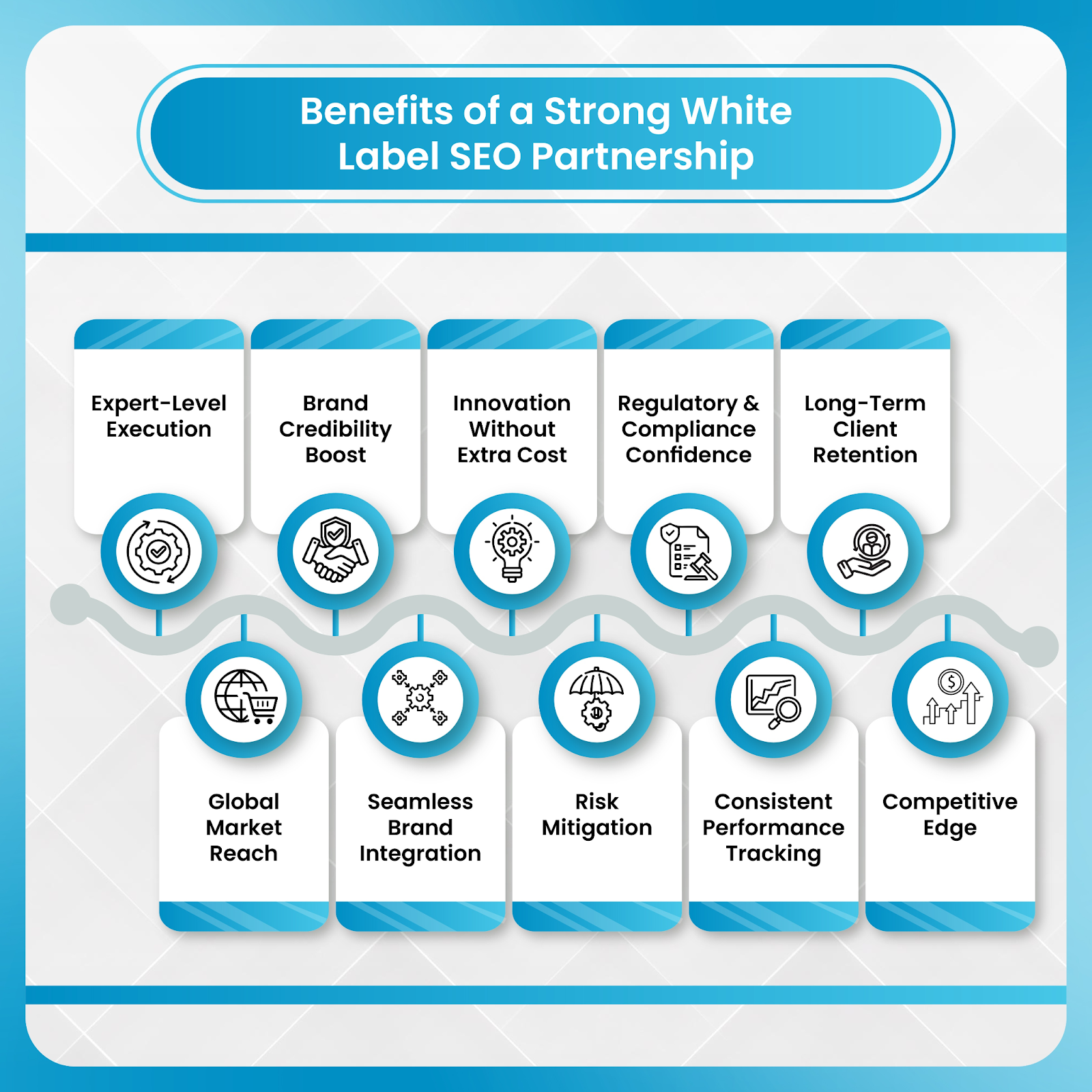
Red Flags That Duplication Is Already Happening
Even with the best systems in place, duplication can still creep in. Knowing the warning signs allows you to catch it early and correct course before it impacts results.
- Inconsistent Keyword Metrics: Your team and your white label SEO partner report rankings for the same keywords, but the numbers don't match. This is often the first sign of conflicting tracking setups or overlapping targeting efforts.
- Conflicting Backlink Profiles: You notice your client is getting multiple links from the same low-authority site, or the velocity of new links suddenly spikes without a clear strategy. This suggests that different vendors are conducting outreach without awareness of each other's work.
- Divergent Content Tone: You read two blog posts on your client's site targeting similar topics, but the writing style, tone, and terminology are completely different. This points to a lack of a unified content strategy.
- Unexplained Ranking Volatility: Your client's rankings for key terms are fluctuating wildly without any obvious external cause, like an algorithm update. Google often interprets internal keyword competition as topic confusion, leading to unstable SERP performance. According to Search Engine Land, as of March 2025, Google said that not all sites hit by core updates will fully recover to their previous peak rankings. Recovery depends on the severity, the quality improvements, and whether a site satisfies relevance and satisfaction criteria.
As an agency, you should conduct monthly "Overlap Audits." This involves sitting down and comparing optimization logs, keyword maps, and backlink reports from both teams side-by-side to identify any red flags proactively.
Coordination Blueprints That Actually Work
Preventing duplication requires more than just good intentions; it demands structured coordination. Here are a few practical blueprints that successful agencies use.
- Shared Governance Model: Assign a dedicated "SEO Liaison" or "Integration Manager." This person’s sole responsibility is to serve as the single point of contact between the in-house team and the white label partner. They review both workflows, resolve conflicts, and ensure the overall strategy remains cohesive.
- Real-Time Transparency: Use structured project dashboards with granular access controls. A white label SEO partner doesn’t need to see your agency's profit margins, but they do need to see the live status of all SEO-related tasks. This ensures privacy while still preventing overlap.
- Micro-Alignment Meetings: Instead of long, unproductive weekly calls, schedule short, 15-minute "intent syncs" every two weeks. The agenda for these meetings should be tightly focused on one thing: overlap prevention. Discuss only the tasks where responsibilities might intersect, such as new content ideas or technical changes.
- Shared Naming Conventions: This may sound simple, but it’s incredibly effective. Establish a consistent system for tagging and naming campaigns, tasks, and files across your CMS, analytics platform, and project management tools. This prevents duplicate tasks from being created simply because they were logged under different names.
Data Synchronization: Making Shared Reporting Work for You
Even the most talented teams can underperform if they’re working from disconnected data. When in-house and white label SEO teams track performance separately — using different KPIs, tools, and reporting intervals — the result is fragmented insights that lead to duplicated actions and inconsistent outcomes.
- Unified KPIs: The first step toward synchronization is alignment on what success actually means. Agencies should establish unified KPIs that reflect shared objectives, not isolated metrics. These may include organic conversions, content engagement rates, or a custom link quality index — all benchmarked under one reporting framework. This unified measurement ensures both teams are optimizing toward outcomes, not just outputs.
- Cross-Validation Reports: Data synchronization isn’t achieved through more reports; it’s achieved through reconciliation. Conduct monthly cross-validation reports where analytics data from both teams is compared side by side. This process reveals where overlapping optimizations are happening — for example, when two teams target similar keywords or duplicate link-building efforts.
When both teams work from a single source of truth, your client sees only one seamless narrative of performance. They can’t tell where your in-house SEO efforts end and your white label partner begins — and that’s exactly how it should be.
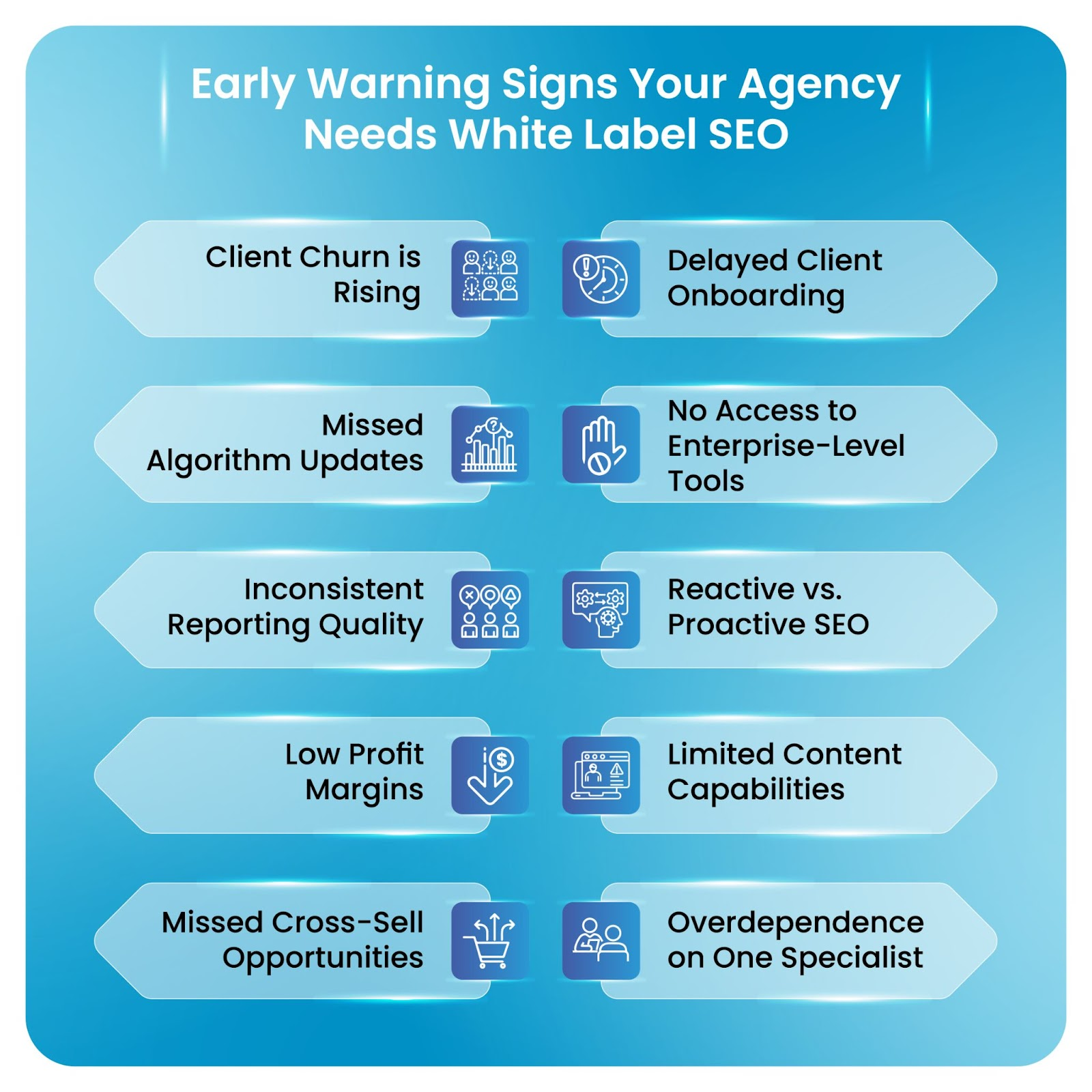
Continuous Optimization: Turning Coordination into a Competitive Advantage
Once duplication is eliminated, coordination becomes your differentiator. Seamless collaboration between in-house and white label teams isn’t just efficient — it’s a compounding advantage that accelerates innovation and scales impact.
- Iterative Ownership: Instead of dividing roles permanently, adopt an iterative ownership model where teams alternate specific optimization areas each quarter. This allows both teams to cross-learn, stay agile, and avoid stagnation. It also prevents overlap by ensuring clear temporal ownership — when one team is optimizing, the other is reviewing and analyzing.
- White Label as R&D Engine: Your white label SEO partner can be far more than an execution resource — they can serve as your R&D arm. Assign them innovation-driven initiatives like testing new schema markup strategies, experimenting with AI-assisted content optimization, or exploring upcoming algorithmic trends. This frees your in-house experts to focus on high-value client strategy, relationships, and brand alignment.
- Scaling Without Chaos: As your agency expands across markets and manages global accounts, duplication risks multiply — different languages, time zones, and cultural SEO nuances all introduce complexity. However, by establishing clear operational hierarchies, shared dashboards, and synchronized workflows, agencies can scale their SEO operations globally without chaos or redundancy.
When both teams operate in rhythm — one exploring innovation, the other maintaining strategic cohesion — coordination evolves into a true competitive advantage.
Key Takeaway Framework for Agencies
To build a duplication-proof workflow that aligns in-house and white label SEO services, agencies can follow this 5-step playbook:
- Define — Establish role boundaries at the task level, not just by department.
- Sync — Use shared dashboards, change logs, and agile sprints to maintain visibility.
- Detect — Set up automation and live monitoring to flag overlapping tasks early.
- Review — Conduct monthly overlap audits comparing both teams’ keyword maps, link data, and content logs.
- Optimize — Continuously evolve systems to reflect new campaign structures and market changes.
This framework ensures accountability, clarity, and momentum — turning duplication prevention into a scalable process rather than a reactive cleanup effort.
Conclusion: Efficiency Is the New Differentiator
In today’s competitive landscape, efficiency is no longer a backend metric — it’s a market differentiator.
Agencies that maintain duplication-free collaboration between in-house and white label SEO partners outperform their peers in campaign turnaround time. That speed translates directly into faster results, happier clients, and a stronger bottom line.
The goal isn’t simply to “divide tasks” but to integrate operations — creating an ecosystem where strategy, execution, and innovation move in sync.
A duplication-proof model doesn’t just prevent waste; it builds operational harmony — where every deliverable, every update, and every optimization feels like part of one unified strategy. That’s how agencies evolve from coordination to true collaboration — and from vendors to growth partners.
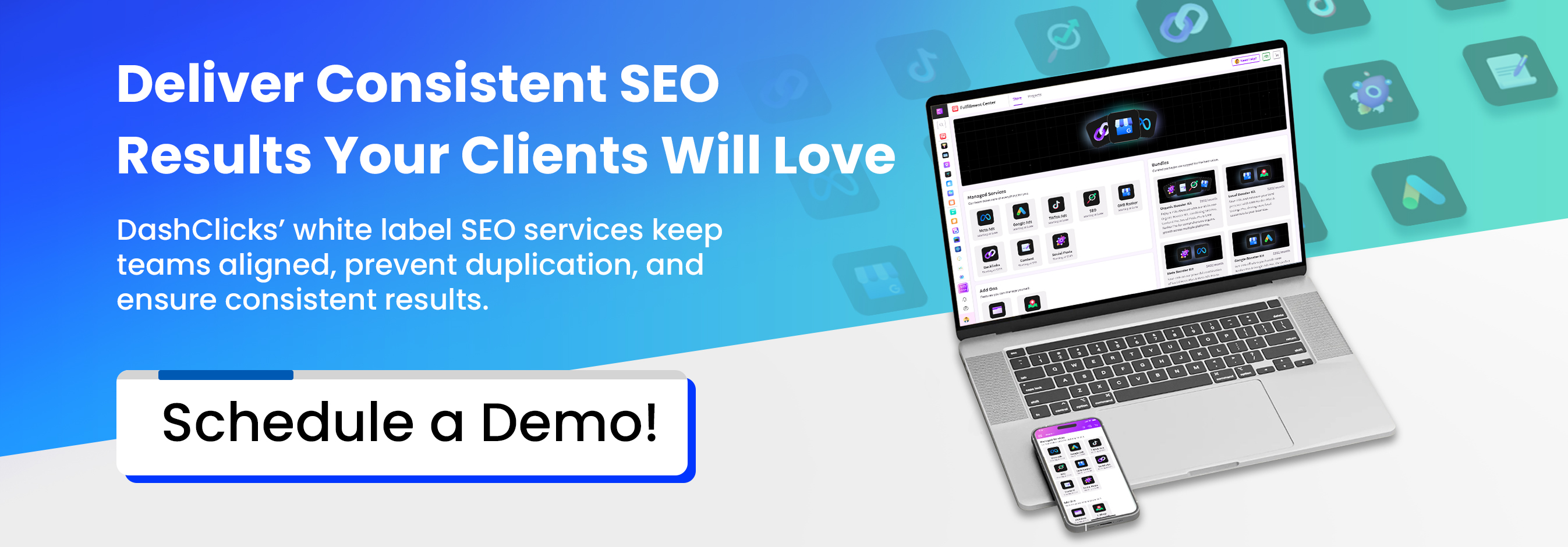


.svg)

.svg)
.svg)
.svg)
.svg)
.svg)
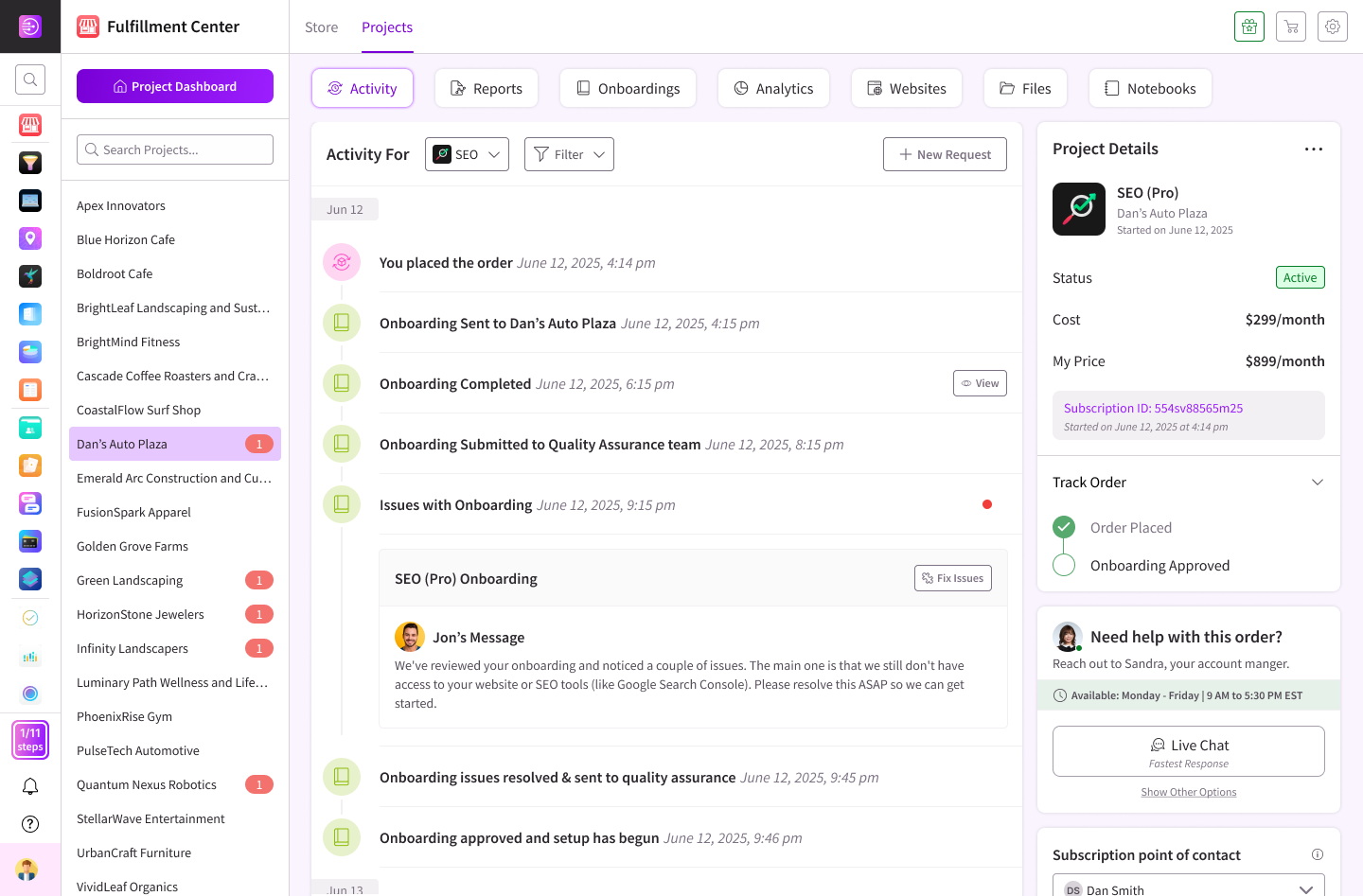
.svg)




.svg)
.svg)
.svg)
.svg)
.svg)